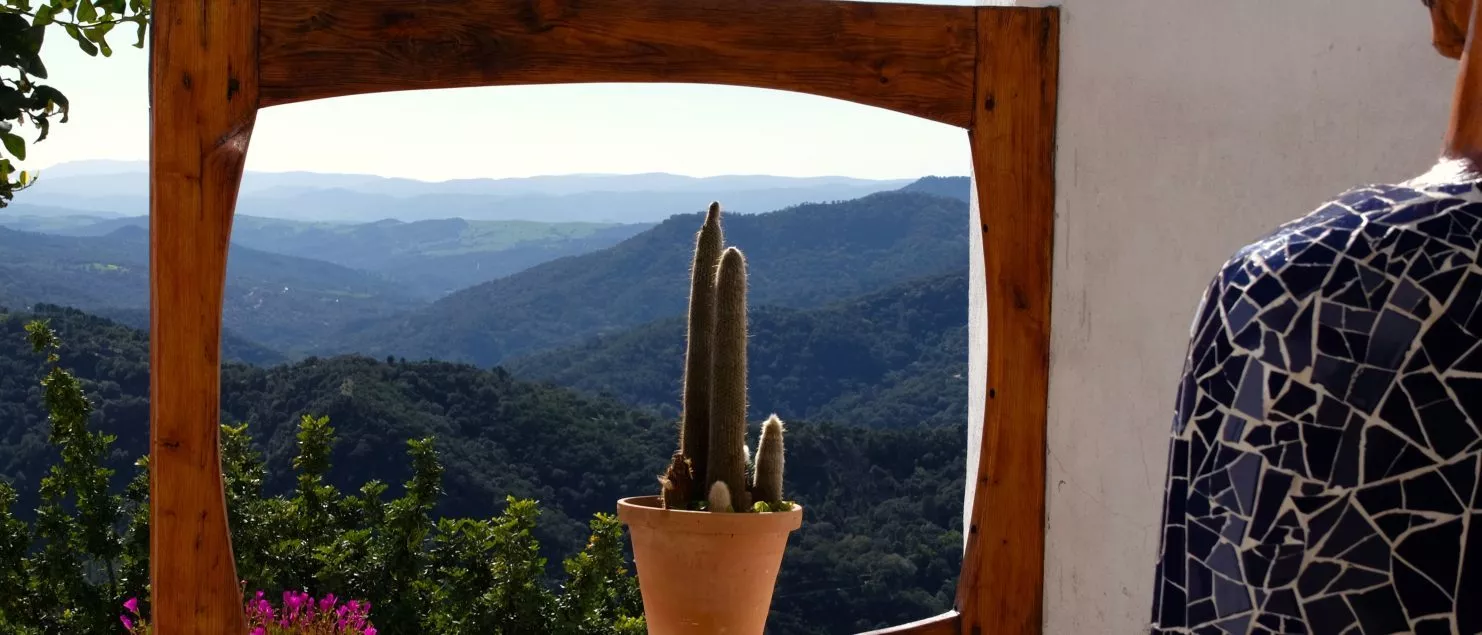What to see in Genalguacil in the Vizier’s beautiful gardens
The essential things to see in Genalguacil, this incredible open-air museum village
In this article you’ll find all the information on what to see in Genalguacil, this incredible open-air museum village:
- A few words about Genalguacil
- Where is Genalguacil on the map?
- What to see in Genalguacil
- What to do in Genalguacil
- Booking accommodation
- Some useful links (bookings and visits in Andalucia)
- What to see near Genalguacil
- Continuing your trip to Andalucia
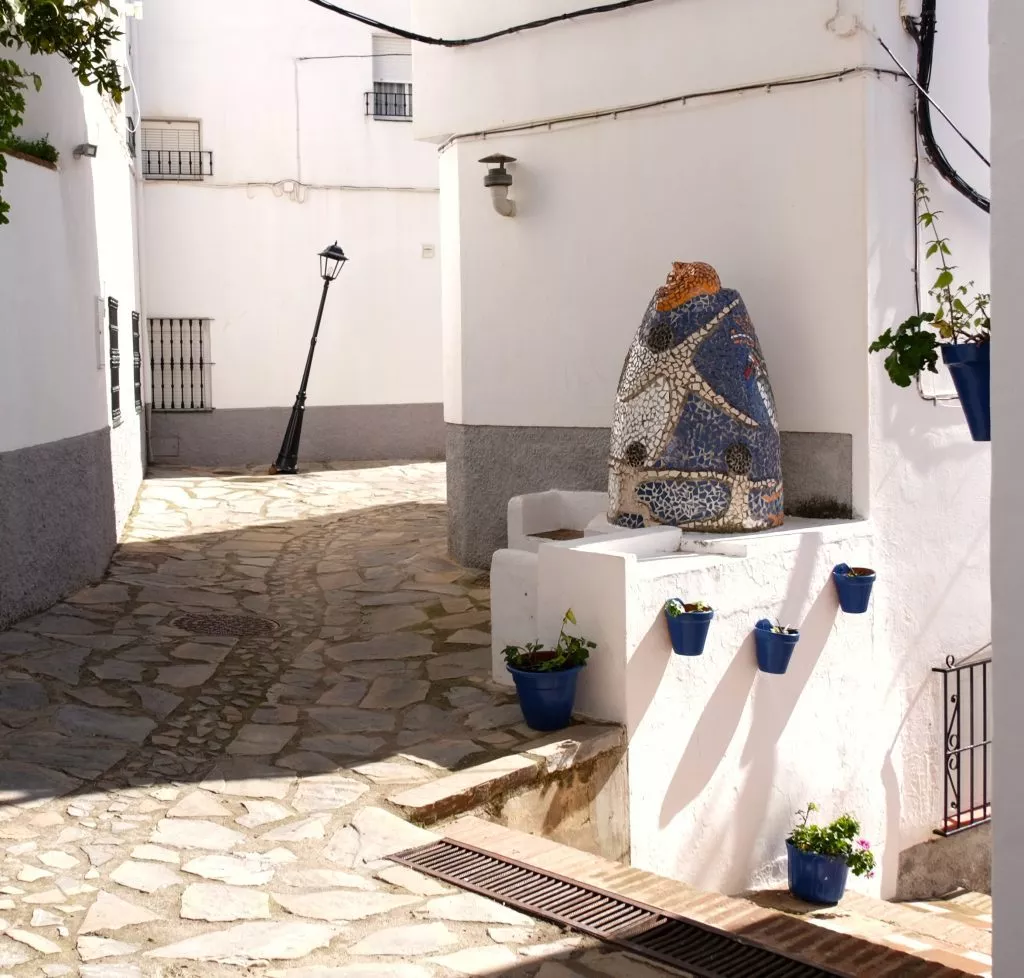
A few words about Genalguacil
The white village of Genalguacil is located in the province of Málaga, in the Genal valley to be precise. It is one of the towns and villages that make up the Serranía de Ronda. The nearest town is Ronda, 45km away.
Genalguacil is one of only three villages in the province of Malaga to have become a member of the “Pueblos más bonitos de España” association. The other two villages are Frigiliana and Parauta. The latter has just been added to this famous list, in December 2023.

This village of 400 inhabitants is known as a museum village, and is set in exceptional natural surroundings. The Genal valley and Sierra Bermeja are one of the natural treasures of the province of Málaga. This village, set deep in the forest, is a place of pure tranquillity.
Genalguacil, the museum village
Genalguacil is a curiosity, it has become an inhabited open-air museum.

It all began in the 90s, when the mayor decided to counter the depopulation of the village by organising a special event: Los Encuentros del Arte.
Since then, the event has been held every two years – in even-numbered years. As always, and for this year 2024 too, the event will be held during the first two weeks of August, with around ten artists selected.
Note: the village receives more than 200 projects from artists from around twenty different countries. Around ten projects will be selected. Each artist selected will come and create at least one work that will be permanently exhibited in the village.

This is why, over the last thirty years, the village has become an inhabited museum. Throughout the streets (on the walls, benches, roofs, chimneys, etc.) of the village, we discover paintings, sculptures, sculpted trunks, ceramics, etc. that blend into their surroundings.
Artists such as Benjamín Ramírez, Carlos Re, Marie-Isabelle Poirier and Patrick Fossey have even bought a house here, or set up their studios to carry out much of their work.
The origin of the name Genalguacil
Hand mills (for metals) belonging to Phoenician and Hellenic cultures have been found in the municipality, in what is known as the Reales Chicos. In the past, there were valuable gold and silver mines, which have now been exhausted.
The origin of the current name is more recent and comes from the Arabic Genna-Alwacir, meaning Gardens of the Vizier.

Where is Genalguacil on the map?
Genalguacil is a white village inland from Andalucia, set in beautiful natural surroundings.

Here’s the map:
What to see in Genalguacil?
- The village’s typical narrow streets
- Public telephone booth
- The old water reservoir
- The MAC, contemporary arts museum
- Los Poyetes viewpoint
- The cemetery
- The Plaza de la Constitución
- San Pedro Martir de Verona church
- A street name… in need of inspiration for this village
Note: there are almost 200 works in this museum-village, so I’ve decided to show around twenty of them, the ones I like best, the ones that speak to me. They are presented among the various places to discover in this unique white village.

The village’s typical narrow streets
Genalguacil is a typically Andalusian white village.

The influence of the Al-Andalus period can be seen in the layout of its narrow, winding streets.

It’s an absolutely marvellous place to spend some time, get lost, relax and dream. What’s more, many of the streets offer superb views of the surrounding countryside, which are themselves invitations to travel.
Notes: it was right next to this village in the Los Reales nature reserve that the Swiss Edmond Boissier added his discovery of the pinsapo tree to science in 1837. The pinsapo is the famous Spanish fir that has been around since prehistoric times. The Junta de Andalucía protects these famous firs in a number of parks in the surrounding area.

Work: “Echando una Escansá”.

This is one of the works I stopped to look at for a while.

The public telephone booth
…I found this public phone box, which has become a rare sight, full of charm.


The old water tank
This is a water tank – Deposito de agua de M. Gardia del Olmo – with a very special aesthetic.

It’s no longer in use, but if you take a look inside… you’ll find this:

Work: ‘Fusión’:

A work by Jaime Becerra, which I find sublime.
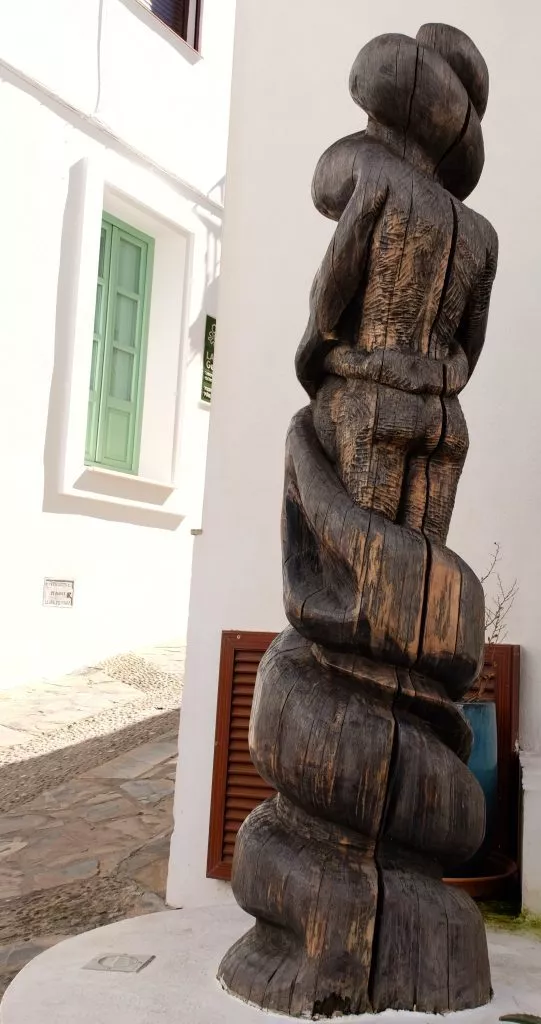
The MAC, Museum of Contemporary Arts
If you can, start your visit to the village with the museum. It will give you a few keys to the works on display in the streets of the village.
The museum is called the Fernando Centeno Museum of Contemporary Art. It is named after the mayor who launched this incredible initiative 30 years ago. The MAC was opened in 2004 following the success of this initiative. It also provides a home for works that cannot be exhibited permanently in the streets.

About the MAC :
- admission: €2
- children under 13: free
- open to the public Wednesday to Sunday, 11am to 2pm and 4pm to 7pm in winter.
- open Thursday to Sunday, 11am to 2pm and 4pm to 8pm in summer.
- August: open every day
Here’s one of the street-art works:

The mirador de los Poyetes
This viewpoint, like others in the village, gives an idea of the scale of the exceptional forest environment in this part of Andalucia.

Work: ‘Muñeca preña’

Work: “Estoy hasta el moño de subir cuestas”, one of the most emblematic in the village.
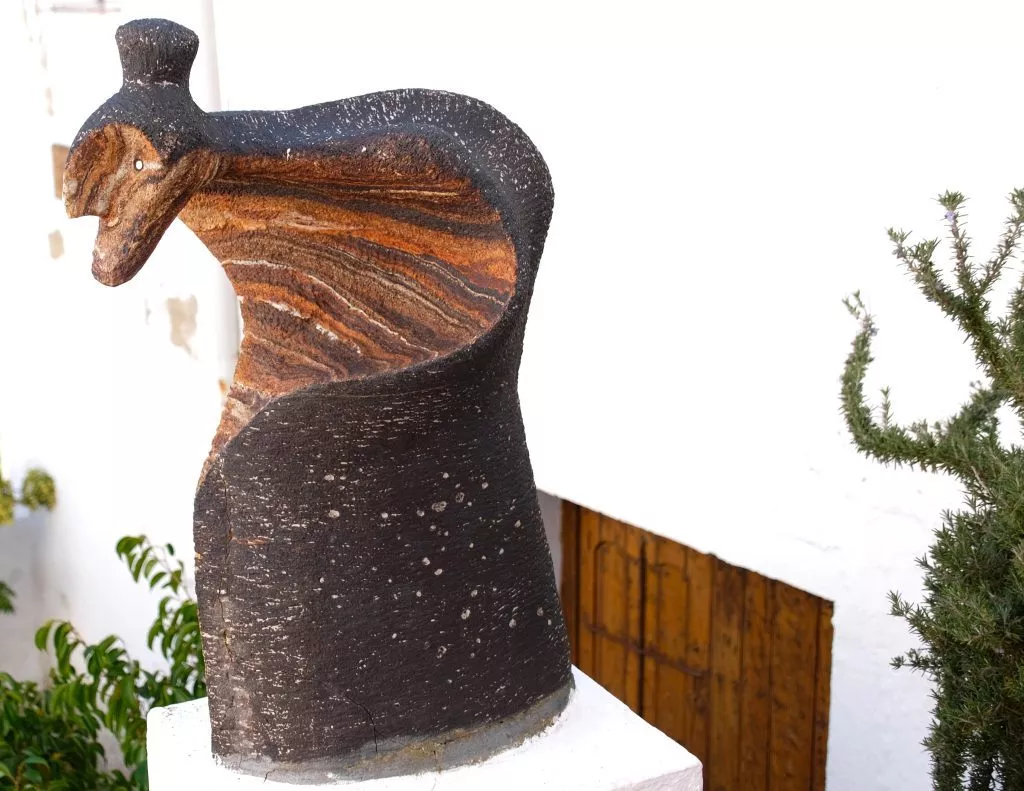
This work refers to the ups and downs of these white villages on the mountainside.
Work: ‘Mujer Anfora’
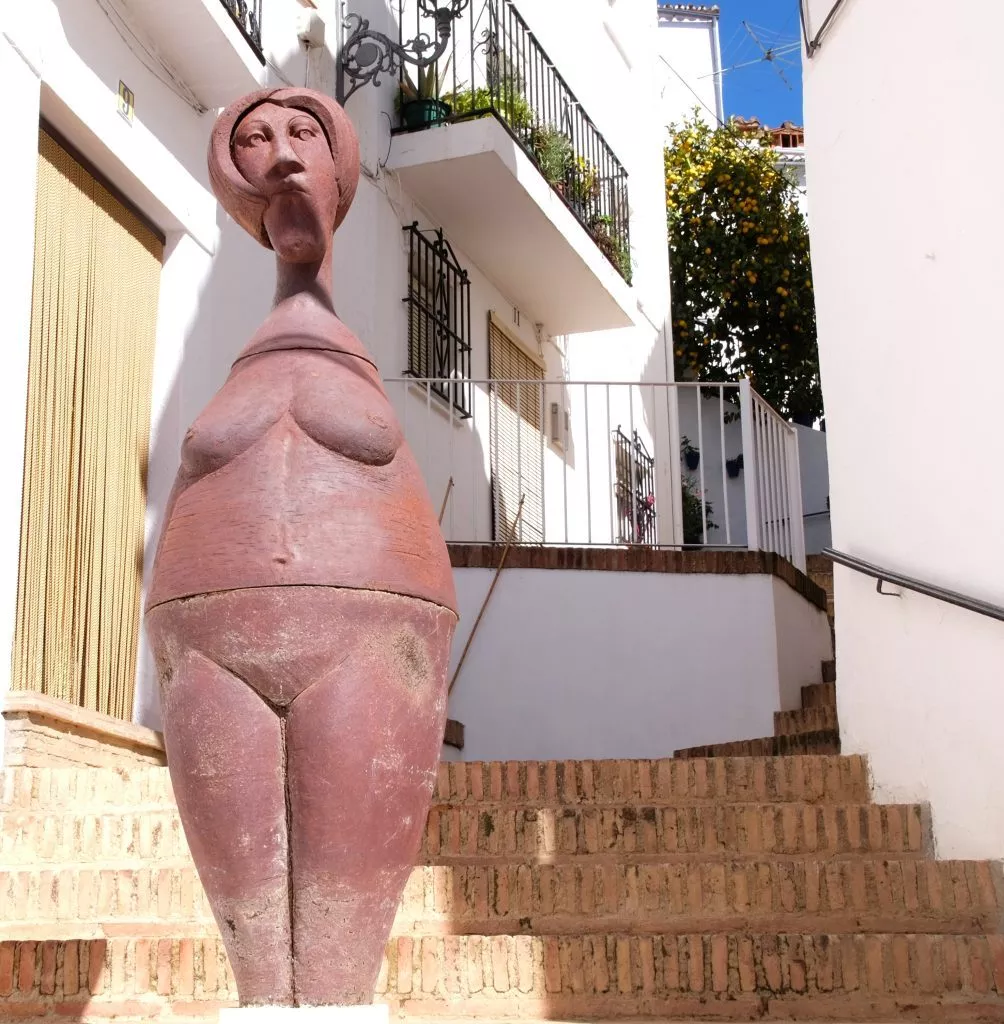
The next one (Raíces), below, is at the entrance to the village:

The cemetery
The cemetery next to the church is well worth a visit.

Inside the cemetery is a stele commemorating local victims of Nazism and the Civil War.
The cemetery below is typical of the white villages of the region.


The Plaza de la Constitución
This superb square is opposite the church and the cemetery. The panorama from this square is absolutely extraordinary, with its mountains and forests of fir and cork oak.

In this square, there is a striking reproduction on the façade of a house of a work by Perez Villaamil y Duguet, dating from 1849 (Prado Museum collection).

Work: “Arco del Viento”.


Church of San Pedro Martir in Verona
The village church is a real beauty. It was built in 1534. Its layout has changed since the original structure was burnt down during the Morisco rebellion. This rebellion in various parts of Andalucia is known as the Revolt of the Alpujarras.
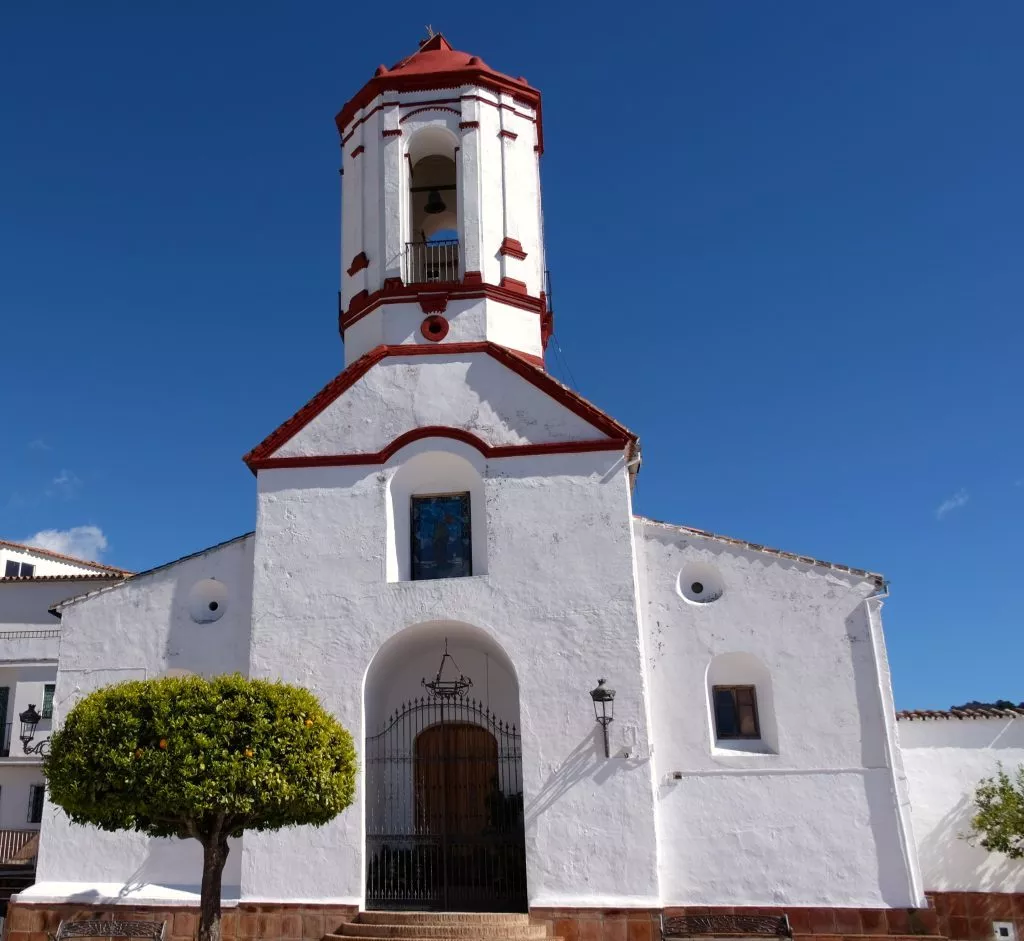
The base of the current bell tower structure is quite surprising:

Work : “Tele-visión”
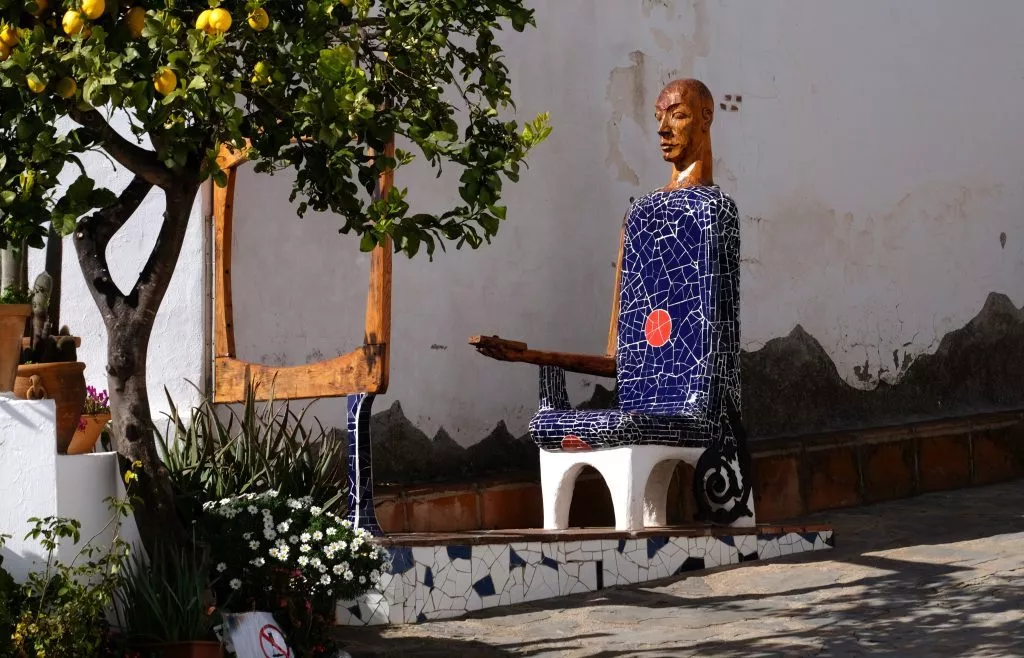
A very telling work….I noticed that we were watching the same TV channel….

A street name… lacking inspiration for such a village

Below is a partial view of a clay painting in Calle Los Álamos in Genalguacil. La Siesta”, by artist Carmen Escalona, is a reminder of an important time of day, especially in summer. Just next door is another of the artist’s works, ‘La Vendimia’.

Ferias and fiestas in Genalguacil
The fair in honour of the village’s patron saint, San Pedro Mártir de Verona, is held on 29 April.
Note: it is customary during the procession, and as the Saint passes through the streets, to throw rice from balconies, and at the same time set off fireworks!

In June, with the arrival of summer, San Juan is celebrated as in every village. The locals have given this celebration a very local name: the first bath of the year. It is customary on this day to go to the banks of the river Genal.
November is the chestnut festival. This is harvest time in the forests around the village, and the harvest is celebrated with a “Tostón de castañas”.
Where to eat in Genalguacil?
First of all, here are the local specialities if you want to try them:
- hot gazpacho (it can be quite cold in the area)
- scrambled eggs with garlic and mushrooms
- salmorejo de carne
- cold meats (chacinas)
Below, the bar at the entrance to the village, with a terrace across the road for a drink and some tapas:
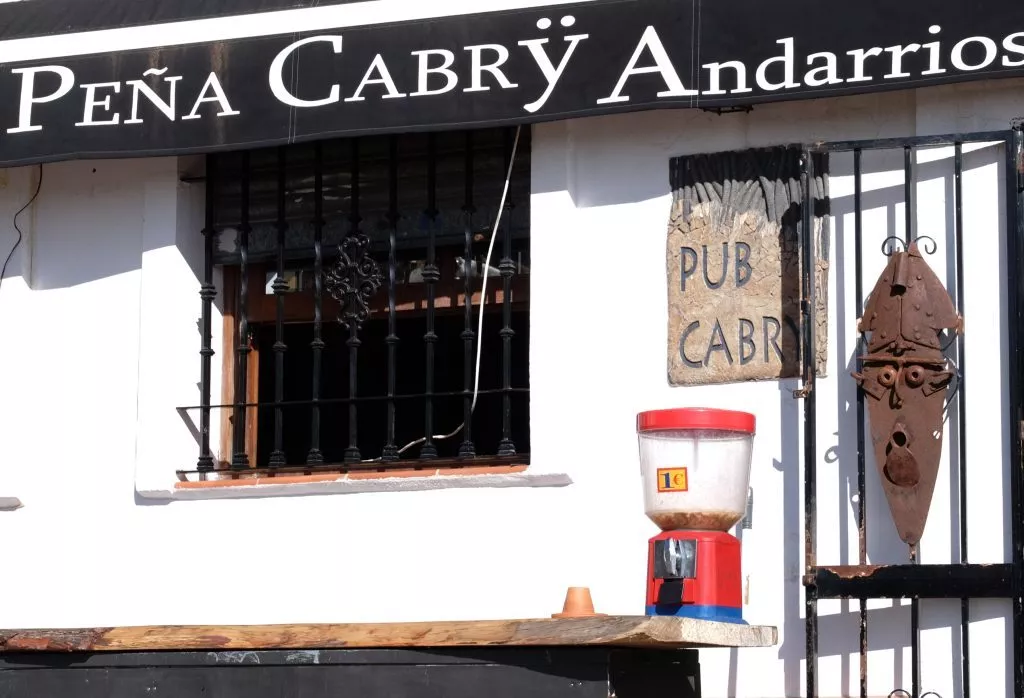
For a local lunch: the El Refugio restaurant
Located just below the Plaza de la Constitución. You can sample the local dishes, including the famous hot gazpacho. The view from the terrace is superb too.
Genalguacil agri-food market
If you come to visit the village on the first Saturday of the month, you can enjoy the Genalguacil agri-food market.
It is located in front of the church on the Plaza de la Constitución. The atmosphere is festive, and you can sample and buy many local products.

In conclusion, Genalguacil is the only inhabited village-museum in the world that boasts an exceptional natural environment: the Sierra de Bermeja. It has been a Protected Natural Park since 1989. A stopover in this village will provide everyone with a memorable day out.
What to see and do in the Genalguacil area
Note: for those who are interested – and curious – here’s a page with 10 great leisure activities to do in Ronda and the surrounding area.
Genalguacil is one of the magnificent villages in the provinces of Cadiz and Málaga that surround Ronda. Here are three of them, all listed among the most beautiful in Spain.
Setenil de las Bodegas
Setenil de las Bodegas is a must-see if you want to discover its distinctive architecture, with its troglodyte houses.
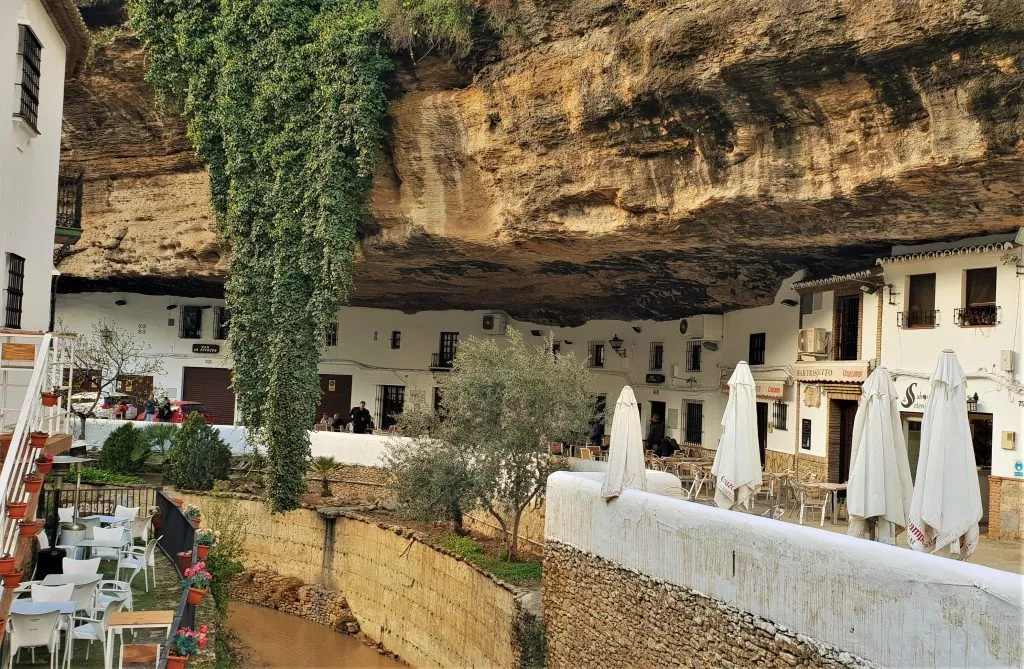
There’s plenty to see in Setenil de las Bodegas. Plan to spend a few hours in this village, including a lunch break in a cave.
Grazalema
Grazalema is a delightful white village that’s a must-see for its history, wool crafts and traditions.
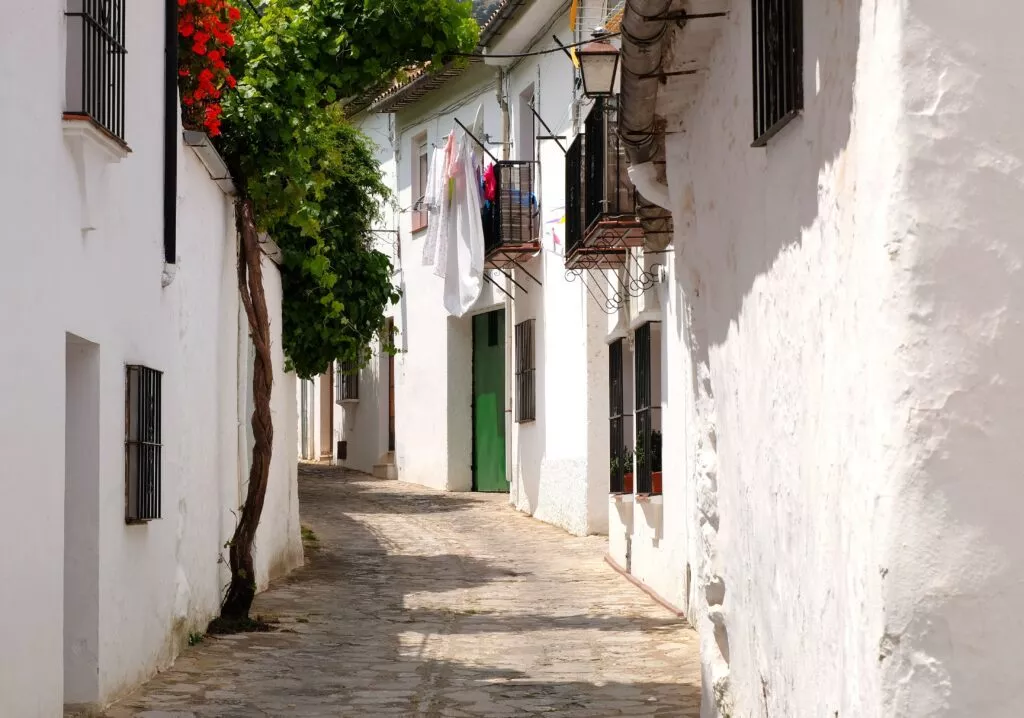
You’ll find plenty of beautiful things to see in Grazalema, and wandering through its narrow streets is a pure delight for lovers of white villages.
Zahara de la Sierra
Zahara de la Sierra is a magnificent white village perched on a rocky promontory. It is close to Olvera.

A visit to Zahara de la Sierra will also leave you with wonderful memories.
Book an excursion or activity in the province of Málaga
Below you’ll find the excursions and activities on offer from Málaga.
You can also book them online today (with free cancellation):
Book accommodation in Genalguacil
Below you will find all the hotels and accommodation available in Genalguacil, once you have selected your dates:
Some useful links (car hire, ideas for visits)
Easy and economical bookings
Continue your trip to Andalucia
Seville
Seville, the capital of Andalucia, is a city full of treasures to discover and monuments to visit.

Here you will find everything you can see in Seville in 3 days. And for those who will stay longer you will also find information on secret Seville and the Santa Cruz and Triana districts.
Cadiz

Visit Cadiz, a city with an incredible past and great beauty, on the Costa del la Luz.
Malaga
When you reach the Costa del Sol you will find in this link what to see in Malaga :

Granada
Visit Granada, discover the Albaicin and Sacromonte districts:

Cordoba
And of course, visit Cordoba, the caliphate city, and the Juderia district

Discover more of Andalusia’s beautiful sites in the Andalusia blog pages.
Here is the link to receive our blog newsletter.
Here are the latest articles on Andalusia
-
Interactive map of Andalucia with best places to see

An interactive map of Andalucia to discover the sites to see around your holiday destination or to prepare a tour or road-trip.
-
Top 15 Must-See Attractions in Ubeda, Spain

Here are the best places to visit and what to see in Ubeda. This Renaissance-style capital city of Andalusia is a marvel.
-
Visit Olula del Rio, the Mujer de Almanzora and the museum

Olula del Rio see its 3 wonders: an extraordinary marble sculpture, a surprising museum and an incredible photography centre.
-
Fiesta del Queso in Zuheros Cordoba

Discover the incredible Cheese Festival – Fiesta del Queso in Zuheros, one of the most beautiful white villages in Spain.

